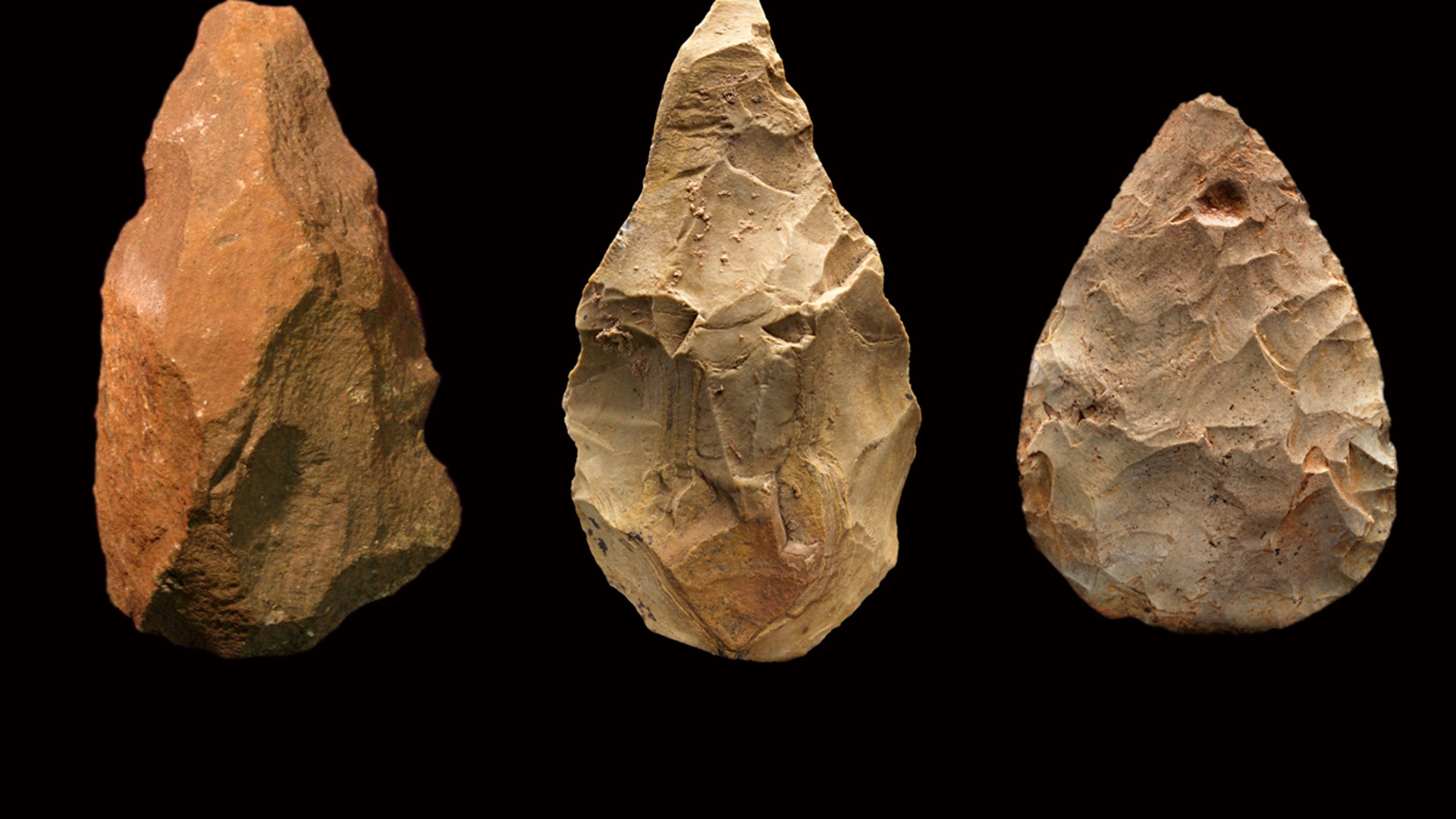Move Back
ADVERTISEMENT
Skip- Published8 Images
Your Ancestor, the Caveman
A new hall at the Smithsonian's National Museum of Natural History shows the milestones in the origin of human beings and lets you look into the eyes of your distant ancestors.
![Homo_Neanderthalensis_2]()
![30_000_Year_Old_Handprint]()
![Making_Early_Art]()
![Early_Handaxes]() Handaxes -- multipurpose tools used to chop wood, butcher animals, and make other tools -- dominated early human technology for more than a million years. Left to right: Africa (1.6 million years old), Asia (1.1 million years old), and Europe (250,000 years old).read moreChip Clark, Smithsonian InstitutionShare
Handaxes -- multipurpose tools used to chop wood, butcher animals, and make other tools -- dominated early human technology for more than a million years. Left to right: Africa (1.6 million years old), Asia (1.1 million years old), and Europe (250,000 years old).read moreChip Clark, Smithsonian InstitutionShare![Cro-Magnon Beads]()
![Archaic_Arts]()
![Early Fireside Chats?]()
![The_Changing_Skull]() Five fossil human skulls show how the shape of the face and braincase of early humans changed over the past 2.5 million years. (from left to right: Australopithecus africanus, 2.5 million years old; Homo rudolfensis, 1.9 million years old; Homo erectus, ~ 1 million years old; Homo heidelbergensis, ~350,000 years old; Homo sapiens, ~ 4,800 years old)read moreChip Clark, Jim DiLoreto, & Don Hurlbert, Smithsonian InstitutionShare
Five fossil human skulls show how the shape of the face and braincase of early humans changed over the past 2.5 million years. (from left to right: Australopithecus africanus, 2.5 million years old; Homo rudolfensis, 1.9 million years old; Homo erectus, ~ 1 million years old; Homo heidelbergensis, ~350,000 years old; Homo sapiens, ~ 4,800 years old)read moreChip Clark, Jim DiLoreto, & Don Hurlbert, Smithsonian InstitutionShare- Published8 Images
Your Ancestor, the Caveman
A new hall at the Smithsonian's National Museum of Natural History shows the milestones in the origin of human beings and lets you look into the eyes of your distant ancestors.
Move Forward
- Your Ancestor, the Caveman








Thumbnail View
Image 0 of 8







